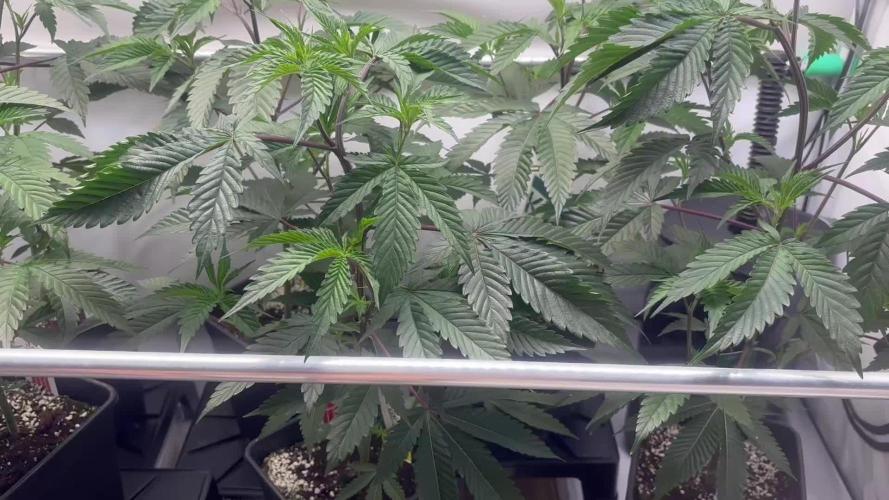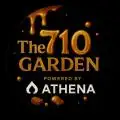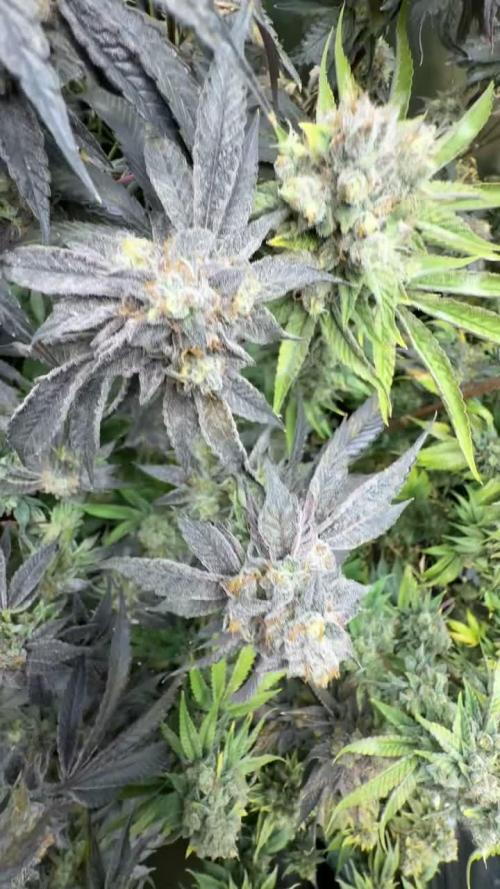The Grow Awards 2026 🏆 



































Likes
Comments
Share


@Arkain_Jenetics
Follow
Once again love the monster bloom . This is actually at week 14 from germ so basically at the 3 month mark . Probably in a week or two I'll start my harvest
I've learned a lot during this grow. Surprisingly lol. Having an irrigation system for different strains at the same time is not ideal on the same irrigation system. I believe some plants needed more shit when others needed less. Which should have been obvious to me but this is my second time using irrigation and first was all same strains.
This grow has been challenging. But its still definitely a learning process.
Not done yet. Current battle in rh. But I think I got it good
Likes
5
Share


@GermGrowFox
Follow
Hallo 👋👋👋 ein weiterer vergangener grow meinerseit, den ich nun Stück für Stück hochladen werde. Dies ist auch mein erster Balkongrow.
Es handelt sich hierbei um eine photoperiodische Blue Sunset Sherbet von Barney’s Farm und einer Royal Jack automatic von Royalqueenseeds.
Beide sind direkt in einem 8l Topf auf dem Balkon gestartet und wurden mit florgsnics ausreichend ausgestattet.
Die Jack hat sich absolut prächtig entwickelt, die Sherbet durfte einige wilde Entscheidungen meinerseits miterleben.
Wünsche viel Freude beim Lesen :)
Likes
3
Share


@Purplepassion
Follow
I guess the plant is one week younger then I've described here, not 100% sure cause I just used my past pictures on my phone , but the last Picture this week and following pictures are in present time.
Enjoy
Likes
26
Share


@Earthy_Greens
Follow
🌱✨ Hey friends, check out these gorgeous bushes! 🎉🍀 At just 8 weeks old, they’re already looking absolutely stunning 🌟💚. Our girls are thriving, feeling their best 💪🌞, and getting ready to bloom 🌸🔥.
We’re working hard to tilt them 🌿🔄 and grow them horizontally 🌱✨ so that every single bud 🌸💎 can soak up as much sunlight ☀️ as possible during the flowering period. This strategy ensures even growth and helps maximize their potential! 🚀🍃
It’s going to be a beautiful sight 🌟, and we can’t wait to see them in full bloom. 🌸🌞 Keep following along for more updates—you won’t want to miss the magic! 👀📔👊💚✨
Likes
29
Share


@JeyGanesha
Follow
Inizio 4 settimana di fioritura 💪...gente è incredibile ma vero! Ho messo in terra un pezzo di piantina che mi s'è rotta(talea) ,senza radicante ne niente. Solo messa in terra...sono passati quasi 10 giorni ed è ancora viva e sta crescendo...vuol dire che ha attaccato con le radici.......non ci credevo nemmeno io, ma quando mi dicono che ho il pollice verde inizio a crederci😂🤣😉😂🤣💪✌️🕉️. W la ganja sempre.....la pianta sacra che salverà il mondo
Likes
7
Share


@Krautbauern
Follow
With this thick headbud, there is a risk of getting wet and bad weather and we dont want any budrod
so we cut the headbud after 66 days from seed to harvest we took away some fan leafs and hung it up to dry.
the lower buds may need a few more days.
Its really unbelieveble how much resin she produces.
smoking report is following
Likes
3
Share


@Deepgrower
Follow
Siguen dos esquejes por maceta de 3.5L una semana más y pasan a maceta individual de 3.5L. De momento 13/14 esquejes siguen perfectos y creciendo bien! Empiezan a mostrar los primeros pistilos!
Likes
1
Share


@The710Garden
Follow
Get yourself some top Shelf clones from krummegurkenstecklinge mit dem Code „The710“ you can get 10% off your purchase
Likes
15
Share


@Ronzo9
Follow
Decent week..... flushed the nutes and started again because it looked like I was scorching it! Smell has increased 10 fold and my garage stinks 😂 I had previously convinced my Girlfriend that the smell was actually the plant food, but now she sees me for the liar that I am. Looked under the magnifying glass today and seen milky trichomes and what looks like a couple that are half turning amber. So for that reason (and partly because I’m getting dogs abuse about the smell) I’m going to start flushing from today and move to harvest mid next week 😎
Likes
62
Share


@Tuki3
Follow
Me puse a chequear el diario y dos semanas les puse floracion y no lo era.
Y por guiarme en eso, pense que estaba demorandose un poco la plantita... No estan tan grande los cogos, pero si super duros, cosa que me encanto.
Tiene aroma a caramelo de naranja como lo dije en la otra semana. Ahora se nota mas y le siento cierto olor a gas, pero hermoso.
Voy a darle unas 3 semanas o 4, a ver que tanto crece. Quiza el fin de semana vuelvo a regar con el producto, pero despues ya voy a usar solamente agua.
Likes
25
Share


@Tetiana_Riz
Follow
The week has passed quite normally, and our girl continues to delight us with her growth. She has already grown by a whole 10 cm, and her leaves have become even wider and greener thanks to the Xpert Nutrients fertilizers that we use with pleasure.
However, we encountered some unpleasant situations related to Sensi Seeds. We reached out to them with an issue of seed germination, not only with Skunk but also with other strains from Sensi Seeds. We provided them with all the necessary information about the purchase, although the receipt was not saved due to various circumstances. But, to our great disappointment, Sensi Seeds denied us, citing the lack of a receipt. We provided them with the date and place of purchase, videos, and photos, but it was not enough.
Honestly, we feel deep disappointment from Sensi Seeds' attitude. We were ready to immerse ourselves in the world of their genetics, knowing that many legendary strains were bred from their seeds. But now we are disappointed not only with the quality of their product but also with the lack of honesty and support. We no longer want to have anything to do with Sensi Seeds and will seek other ways to fulfill our dreams.
People, please take a look at the photos and videos and share your opinion. Did I provide enough evidence to Sensi Seeds, or should I have provided a receipt as well? I believe that integrity should come first. Sensi Seeds, you have shown your lack of integrity. People, I appeal to you: no honest and self-respecting grower can stand aside. I ask each of you to voice your opinion.
Likes
Comments
Share


@DansHampf
Follow
20JUNE2025: Buds are forming well. Water them 1 liter every third day.
Likes
26
Share


@PedroAndHisPlants
Follow
Day 85: First Grow
We’re entering a new week, and it’s exciting to see the progress in our first grow. The plants are thriving, and the buds continue to get thicker and frostier. The formation of orange hairs is becoming more pronounced, indicating that we're on the right track.
This week, we’ve decided to order a microscope to monitor trichome development more closely. Additionally, we're considering adding CANNAZYM to our feeding regimen to support bud growth and overall plant health.
Let’s keep pushing forward and make this a successful grow!
Likes
11
Share


@Homestickycannabis
Follow
I'm excited for this one, really skunky smell and lovely buds. Hey growth was right on point with a auto and having her under 24 hours if light a day really fattened up her flowers. She grew with zero stretch between nodes and stacked nothing but nice colas. I would definitely recommend this strain for anyone looking for a fast turnaround of fat resinous buds.
Cheers.
Likes
38
Share


@ScouseCityLX
Follow
Week 3 of flower, can see already some nice bud production. Terpenes are building up and making the room stink, has a dark berry chocolatety gassy og smell to it, just how I remember choc mint. The bud structure isn't exactly what I was hoping for but cant complain! Was a free seed sent to me after months of searching for the strain at a time before the v2 was a thing. Buds will be going through the trim bag at harvest so will probs give them more a uniform look to them.
Likes
20
Share


@Tracie67
Follow
It's been a pretty easy week. Enjoying watching the buds get thicker! Just going to coast to the end at this point....hoping to harvest within the next 2 weeks. Already getting excited for my next grow...thinking Ethos Planet of the Grapes or Ethos Crescendo.
Likes
9
Share


@oxieg3ngrows
Follow
Day 57 of flower and she will definitely be pulled day 60 - 62. Her trichomes are about 5% amber, 95% cloudy with very little clear. I reiterate what I said last week: this pheno STANKS like grape soda and gasoline.
Likes
10
Share


@Rqsgrowernube93
Follow
All plants have nugs but the quick one . My F1 /royal critical & Royal gorilla all are looking like they are gonna have some weight stacked up. First grow is going amazing definitely hooked on growing these RQS seeds !!



















